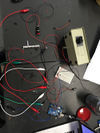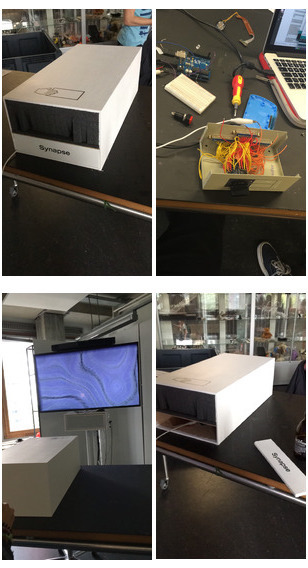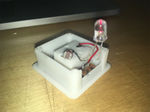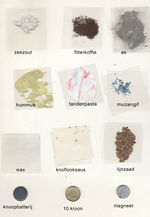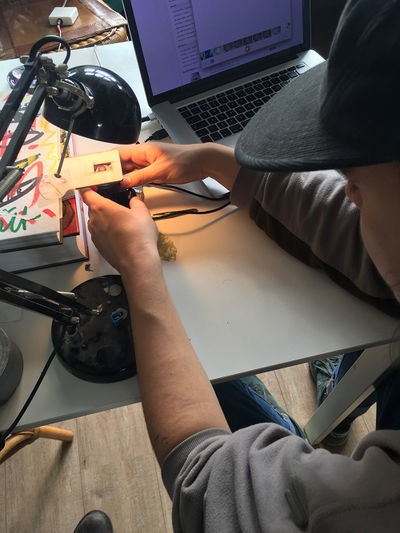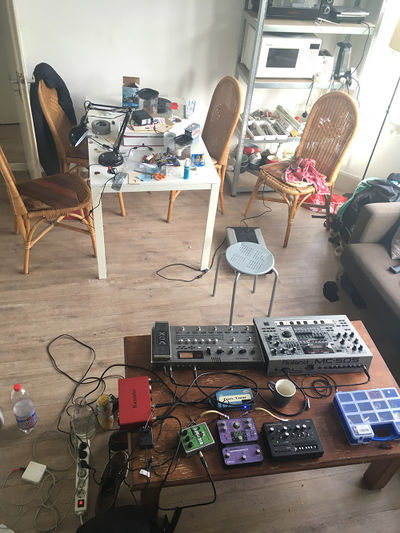Difference between revisions of "How to be Human"
| Line 14: | Line 14: | ||
=='''Inhuman Factors / Sensitivity Training'''== | =='''Inhuman Factors / Sensitivity Training'''== | ||
[https://youtu.be/xjPsiOwIxJ4 >>>>>>>>>>(microscopic film)<<<<<<<<<<] | [https://youtu.be/xjPsiOwIxJ4 >>>>>>>>>>(microscopic film)<<<<<<<<<<] | ||
| − | We (me & [http://digitalcraft.wdka.nl/wiki/User:JeroenRijnart Jeroen Rijnart]) chose to work with optical light sensors. This kind of sensors were used in a lot of electronic devices among which computer mice. We found out that computer mice has a kind of light sensor that can observe the surface where its placed. And there is a possibility to hack this sensor and use it as a lo-fi mini camera. We were looking for specific kind of chip that has been used in a lot of tutorials on internet. Unfortunately we couldn't find the right chip so we decided to start with | + | We (me Susanne & [http://digitalcraft.wdka.nl/wiki/User:JeroenRijnart Jeroen Rijnart]) chose to work with optical light sensors. This kind of sensors were used in a lot of electronic devices among which computer mice. We found out that computer mice has a kind of light sensor that can observe the surface where its placed. And there is a possibility to hack this sensor and use it as a lo-fi mini camera. We were looking for specific kind of chip that has been used in a lot of tutorials on internet. Unfortunately we couldn't find the right chip so we decided to start with another kind of light sensor. We learned a lot about datasheets and how to read them. Also we understand how optical mice work. |
Microscopic Webcam | Microscopic Webcam | ||
| + | We decided to hack a webcam and turn it into a microscope. Most important is that you keep de lens and sensor clean, otherwise it won't work. We filmed a lot of surfaces, textures and objects. After we collected a lot of footage we created music/soundscapes that matches with the footage. | ||
| + | |||
Revision as of 18:06, 30 October 2017
Contents
On the body
Bodypart: pink finger
Pinky finger, or little finger, also known as the fifth digit or just pinky, is the most ulnar and usually smallest finger of the human hand, opposite the thumb, and next to the ring finger. I choose this bodypart in a hurry, because the ear was chosen already. Later when making a groups I got put together with Jerry and Naomi and they had the body parts indexfinger and eye(s). We started with brainstorming [plaatje van brainstorm schetsen] and we pointed out several themes and ideas. We had identification, myths and hand-eye coordination. Those three themes could be connected with each other but we needed a concept to start building, because we had only 1 week to have an idea and to build.
concept
We decided to create a machine/controller that tests and challenge your hand-eye coordination. You can't see how to control or use the machine/controller. You can only see the visual moving when using the controller. Jerry and me started building and bought faders, buttons and switches to implement all these in a circuit. Naomi was responsable for the moving visuals. When both
Inhuman Factors / Sensitivity Training
>>>>>>>>>>(microscopic film)<<<<<<<<<< We (me Susanne & Jeroen Rijnart) chose to work with optical light sensors. This kind of sensors were used in a lot of electronic devices among which computer mice. We found out that computer mice has a kind of light sensor that can observe the surface where its placed. And there is a possibility to hack this sensor and use it as a lo-fi mini camera. We were looking for specific kind of chip that has been used in a lot of tutorials on internet. Unfortunately we couldn't find the right chip so we decided to start with another kind of light sensor. We learned a lot about datasheets and how to read them. Also we understand how optical mice work.
Microscopic Webcam We decided to hack a webcam and turn it into a microscope. Most important is that you keep de lens and sensor clean, otherwise it won't work. We filmed a lot of surfaces, textures and objects. After we collected a lot of footage we created music/soundscapes that matches with the footage.
Mind (of) the Machine
body text
MICA collaboration
body text2
